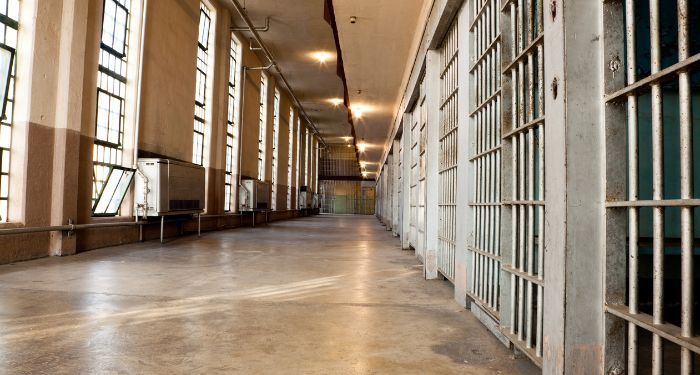
Ending Censorship Applies to Prison, Too: A Prison Banned Book Week News Roundup, 2023
U.S. prisons remain the institutions where the most censorship occurs. This has not changed, even as school and public library book challenges have skyrocketed in numbers since 2021. Censorship thrives in prisons for several reasons, including the fact that the private, for-profit industry doesn’t need to care about the rights of those housed within them. Indeed, it also thrives because the general public does not understand how bad the conditions are for those experiencing incarceration, does not understand how the prison industrial complex operates, and, frankly, the general public does not understand why they should care about those who are in prison.
This differs from schools and public libraries, which have generally positive perceptions in the public eye. Moreover, those who use schools and public libraries are those who are, by public perception, law-abiding citizens (and in schools, the perception is further bolstered by the fact these are children).
Recidivism goes down when individuals experiencing incarceration have access to books, but prisons limit access by not having libraries or only having old and out-of-date materials in those libraries; putting extreme limits on where and how books can be sent to those inside the facility; allowing mailroom employees to pick and choose what they determine to be “appropriate”; or a combination of these or other factors. If access to books decreases recidivism, then why would prisons limit it so much?
The answer is profit.
Over the last two years, as censorship and book bans have increased in public institutions, the need to tackle prison censorship has not ended. If anything, those working to change this system and get books inside prisons are being heard even less than they were prior to the start of the pandemic. Access to digital books and the technology to use them remained behind paywalls for too many who are incarcerated, further choking the rights of those in a time when the world outside–and, indeed, inside–was completely upended. Books continued to be banned or removed, and libraries continued to either not exist or fell into further disarray, thanks to “budget” and “safety” concerns.
Despite the fact there continues to be a divide between the work being done to ensure access to books and libraries remains uninhibited for school and public library users and those experiencing incarceration, the two movements are not in opposition. If anything, the positive steps forward to ensure that books cannot be banned in school and public libraries (including state-level laws like those in Illinois and those proposed in Massachusetts, Pennsylvania, and others) are an opportunity to encourage those involved in this fight to not only stay engaged but to build knowledge of and create action around prison censorship.
Book ban bills may target schools and libraries specifically for now, but those actions are forward movements and should create momentum to take the First Amendment Rights protections even further. Indeed, it would make sense for parent groups pushing against book bans on the local level at their schools and libraries to connect with the leaders of anti-censorship campaigns in prisons and share their mutual knowledge, their tools, their wins, and their defeats. If access to books means people are less likely to return to prison once they are released, is that not a lesson that should also be shared at school and library board meetings? If legislators have signed off on a bill to end book bans in schools and libraries, why not push for the next measure of liberation and demand that every prison, public or private, have a library equipped with a full-time employee and books that have an average publication date within the last 5-10 years?
Wins in one arena are wins in all arenas…if action continues.
We know that the same things driving people to ban books in schools and libraries is the same exact bigotry and racism behind choking access to books in prisons. It’s hatred, it’s power, and it is fear of what happens when someone is able to see themselves or others in a story and become empowered, enlightened, free. An educated populous is a populous that cannot be easily controlled or manipulated. We know this based on the connections between recidivism and books. We know this based on how reading increases empathy and multiple literacies and critical thinking.
We know this based on the types of books being ripped from shelves right now and the rhetoric around them. “Critical Race Theory,” and “Social Emotional Learning,” and “Comprehensive Sexuality [sic] Education” are all dog-whistles for the idea of thinking without being told what to think. Books that do not paint a happy, colorful image to cover up the lies and misinformation perpetuated throughout history are uncomfortable for those in power to sit with because they shine a light on how they earned that power.
One of the most important bills related to book bans floated on the national level this year is also one that has received little attention: The Prison Libraries Act. U.S. Representatives Emanuel Cleaver, II (D-MO), Sheila Jackson Lee (D-TX), and Shontel Brown (D-OH) proposed the bill in April, which would authorize $60,000,000 over six years for state prisons to provide library resources and services — indeed, this isn’t just about dropping tons of books into the prisons and moving on. Trained professionals would be there to help people use the educational and entertainment resources. The Act would also help build powerful coalitions between prisons and the local libraries in their community.
The Prison Libraries Act bridges the gap between work being done on the ground for schools and libraries, and that is being done for prisons. Right now, it continues to sit in the House Judiciary Committee, but it is primed for the 2023-2024 legislative season.
If you believe in the rights of all to read, then that extends, too, to what continues to happen in prisons across the country. The same goes in the other direction: if you care about prison censorship, then you also care about what is (or is not!) happening in schools and public libraries.
Now is the time to work together.
Last week was PEN America’s Prison Banned Books Week, and across the web, there was tremendous writing on the topic. It seems fitting to highlight that in a big roundup.
Prison Banned Books Week News and Stories Worth Reading
- PEN America’s full, new report, “Reading Between The Bars” is an excellent look at the widespread reality of carceral censorship. Some of the big takeaways are how the pandemic increased prison censorship by removing more books from access, management within prisons continues to obscure how widespread censorship is, and the inclusion of a database of books banned in various state prisons–this last piece comes with a host of caveats, all of which are laid out in the report and which reemphasize the prior points. Tens of thousands of books are banned in prisons.
- There is an incredible series of pieces published in The Boston Globe to spend time with. First: I’m a prisoner fighting book censorship. Here’s why our access to books matters.
- More at The Boston Globe, Ban the Bans: A better way to rid racism in prison.
- Also, at The Boston Globe, In solitary confinement, banned books are a lifeline. This line: “Like it or not, I’m a role model for my fellow inmates. I won’t apologize for valuing a good book.”
- “On the day I return, Kaba admits the interactive part of the installation is “kind of a trick question.” Every one of the books that were in George Jackson’s cell would likely be censored today, she tells me. “The prison of 1971 is not the prison of 2023,” she says. “The prison of 2023, in most ways, is worse than the prison of 1971. Worse in terms of surveillance, worse in terms of control, worse in terms of what people can say.”” From In These Times‘s story titled “Prison Itself Is Censorship”: Mariame Kaba on the Freedom to Read.
- The Marshall Project continues to be a premier place to learn about the U.S. prison and (in)justice system, so naturally, their work is crucial during and well beyond Prison Banned Books Week. Continue learning with Many Prisons Restrict Books to Stop Drug Smuggling. Critics Say It Doesn’t Work.
- From late September is this piece in Esquire about what it is like to be a journalist in prison–a renaissance happening that you may not even know about because that is what prisons want to squash.
- Also, late last month, a look at the “technology” that those experiencing incarceration may have access to. It’s terrible, glitchy, and costs a lot of money.
I wanted to end this roundup with a piece published earlier earlier this year by Gretchen Sterba. When Illinois banned book bans, activists rightly noted that this is limited to schools and public libraries. This piece covers that and why reform of prison censorship is imperative both in Illinois and beyond. Though a drop in the bucket, just two weeks ago, Illinois’s Secretary of State and State Librarian Alexi Giannoulias announced that after a six-year hiatus, the state’s 28 prisons would each be receiving $15,000 for their libraries.
Also In This Story Stream
- How To Prepare for Pride Month in Libraries 2024: Book Censorship News, May 10, 2024
- Are Librarians Criminals? These Bills Would Make Them So: Book Censorship News, May 3, 2024
- How to Fight Book Bans in 2024: Book Censorship News, April 26, 2024
- Google Is Destroying Your Access to News: Book Censorship News, April 19, 2024
- What Young People Can Do About Book Bans: Book Censorship News, April 12, 2024
- Sexual Assault Awareness Month & Book Banning: Book Censorship News, April 5, 2024
- How Public Libraries Are Targeted Right Now—It’s Not “Just” Books: Book Censorship News, March 29, 2024
- The 2024 Lambda Literary Awards Shortlists Are Here
- You’re Wrong About These Common Myths About Book Ban: Book Censorship News, March 22, 2024
- State Anti-Book Ban Legislation Updates: Book Censorship News, March 15, 2024











